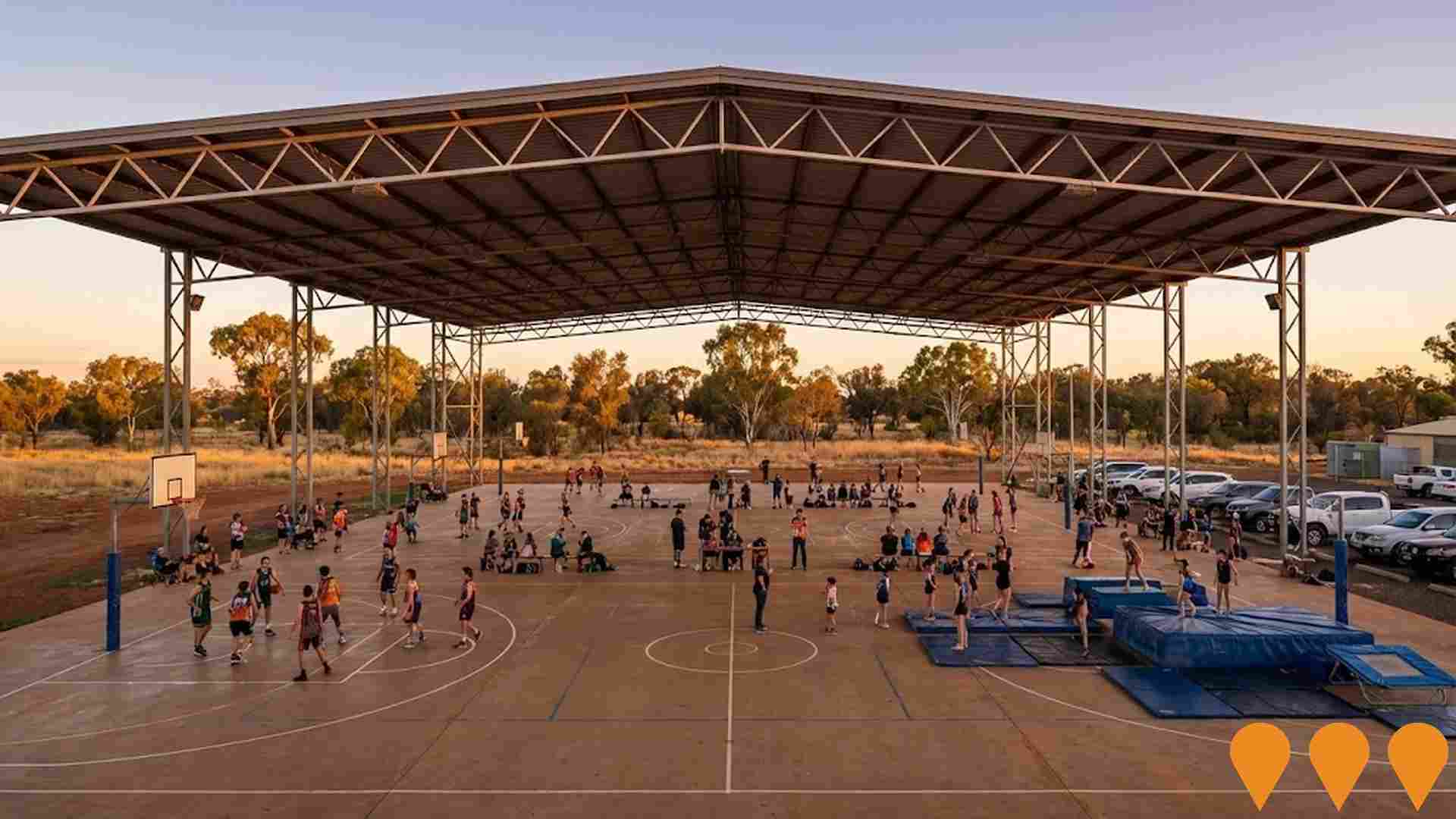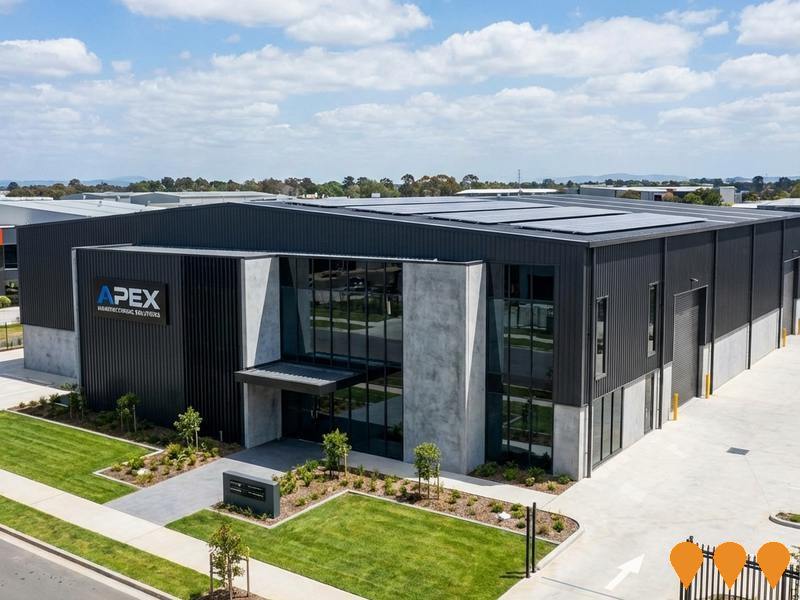Chart Color Schemes
est. as @ -- *
ABS ERP | -- people | --
2021 Census | -- people
Sales Activity
Curious about local property values? Filter the chart to assess the volume and appreciation (including resales) trends and regional comparisons, or scroll to the map below view this information at an individual property level.
Find a Recent Sale
Sales Detail
Population
Population growth drivers in Dubbo Surrounds are strong compared to national averages based on AreaSearch's ranking of recent, and medium to long-term trends
Dubbo Surrounds' population is approximately 6,283 as of Aug 2025. This figure represents an increase of 320 people (5.4%) since the 2021 Census, which reported a population of 5,963. The change was inferred from ABS's estimated resident population of 6,146 in June 2024 and an additional 108 validated new addresses since the Census date. This results in a population density ratio of 1.5 persons per square kilometer. Dubbo Surrounds' growth rate of 5.4% since the 2021 census exceeded both the SA4 region (3.2%) and the SA3 area, indicating it as a growth leader. Natural growth contributed approximately 56.1% to overall population gains during recent periods.
AreaSearch uses ABS/Geoscience Australia projections for each SA2 area, released in 2024 with 2022 as the base year. For areas not covered by this data, NSW State Government's SA2 level projections are used, released in 2022 with 2021 as the base year. Growth rates by age group from these aggregations are applied to all areas for years 2032 to 2041. Future population dynamics anticipate above median growth for locations outside capital cities. By 2041, Dubbo Surrounds is projected to expand by 787 persons, recording a total gain of 10.3% over the 17 years.
Frequently Asked Questions - Population
Development
Residential development activity is lower than average in Dubbo Surrounds according to AreaSearch's national comparison of local real estate markets
Dubbo Surrounds granted approval for approximately 17 residential properties annually. Between financial years FY-21 and FY-25, 85 homes were approved, with an additional 4 approved in FY-26. On average, each dwelling built over the past five financial years attracted around 2.8 new residents per year.
The average construction cost value of new homes was $527,000. This financial year has seen $4.8 million in commercial approvals. Compared to Rest of NSW, Dubbo Surrounds had roughly half the rate of new dwelling approvals per person as of 2021, placing it among the 14th percentile nationally. New development primarily consisted of detached dwellings (90.0%) with a smaller proportion of medium and high-density housing (10.0%).
The area's estimated population per dwelling approval was 1404 people. Population forecasts indicate Dubbo Surrounds will gain approximately 650 residents by 2041, suggesting current construction levels should meet demand adequately.
Frequently Asked Questions - Development
Infrastructure
Dubbo Surrounds has limited levels of nearby infrastructure activity, ranking in the 0thth percentile nationally
Changes to local infrastructure significantly impact an area's performance. AreaSearch has identified 48 projects likely to affect the area. Key projects include PCYC Western NSW Sports Hub, New Dubbo Bridge, NSW SES Dubbo Unit Headquarters, and Blueridge Business Park. The following list details those likely most relevant.
Professional plan users can use the search below to filter and access additional projects.
INFRASTRUCTURE SEARCH
 Denotes AI-based impression for illustrative purposes only, not to be taken as definitive under any circumstances. Please follow links and conduct other investigations from the project's source for actual imagery. Developers and project owners wishing us to use original imagery please Contact Us and we will do so.
Denotes AI-based impression for illustrative purposes only, not to be taken as definitive under any circumstances. Please follow links and conduct other investigations from the project's source for actual imagery. Developers and project owners wishing us to use original imagery please Contact Us and we will do so.
Frequently Asked Questions - Infrastructure
Central-West Orana Renewable Energy Zone
NSW's first Renewable Energy Zone, a 20,000 sq km area centered around Dubbo and Dunedoo. The project involves a new high voltage transmission network and energy hubs, unlocking at least 4.5 GW of network capacity for up to 7.7 GW of renewable generation and storage projects. The project received NSW planning approval in June 2024, with construction continuing through to 2030. It is expected to power around 2 million homes, generate an estimated $20 billion in private investment, and support around 5,000 construction jobs at its peak.

Dubbo Base Hospital Redevelopment Stages 3 & 4
The NSW Government invested $150 million to redevelop Dubbo Hospital in Stages 3 and 4, delivering a new three-storey clinical building including emergency department, medical imaging unit, ambulatory care services, critical care floor with intensive care unit and cardiac catheter laboratory to provide high-quality healthcare to Dubbo and western NSW communities.
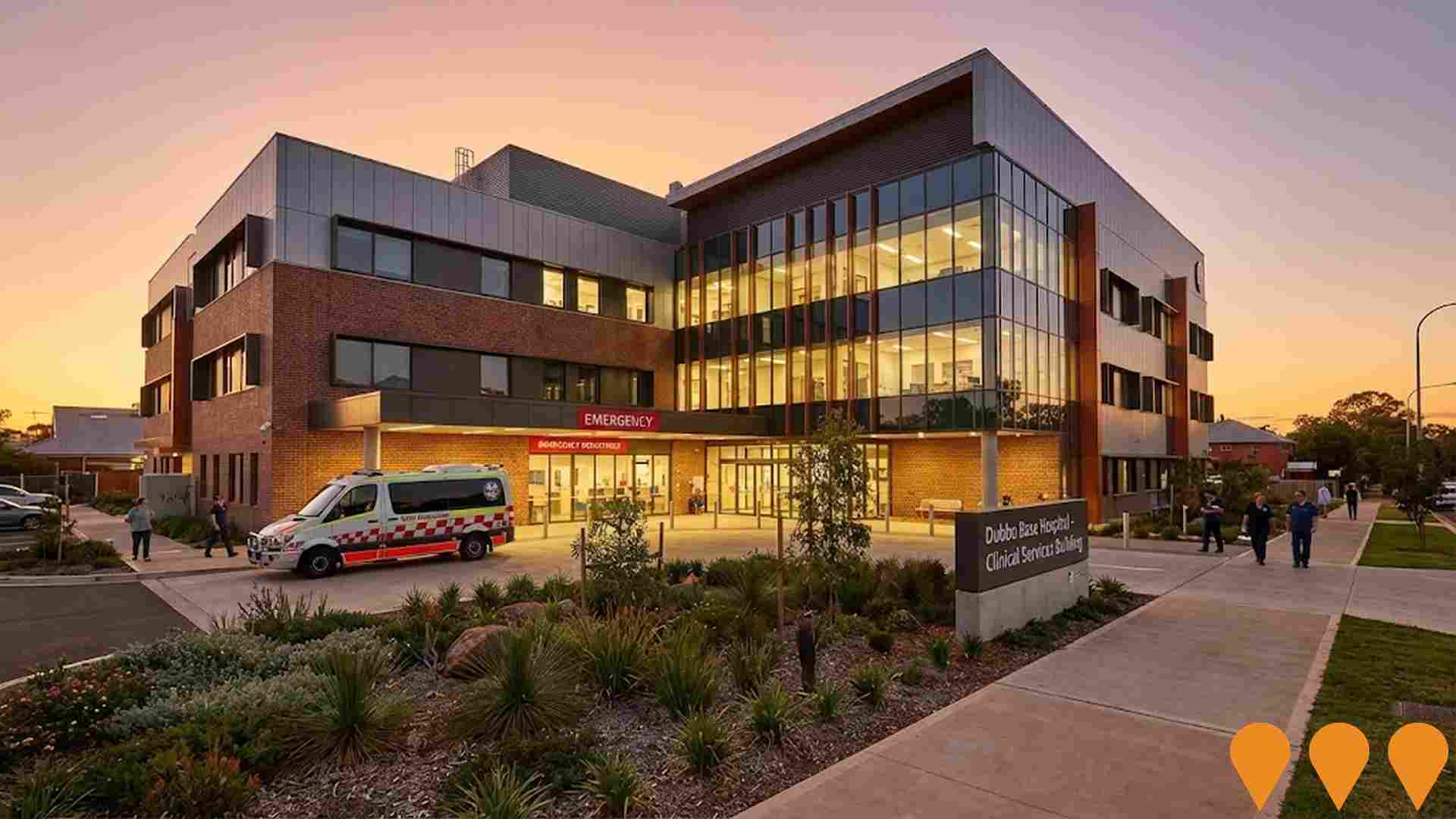
Western Cancer Centre Dubbo
The Western Cancer Centre Dubbo is a purpose-built two-storey facility providing life-saving cancer treatment and diagnostic services, including 16 chemotherapy spaces, radiation therapy bunker, PET CT scanner, wellness space, and support services for cancer patients in regional and remote areas of Western NSW.
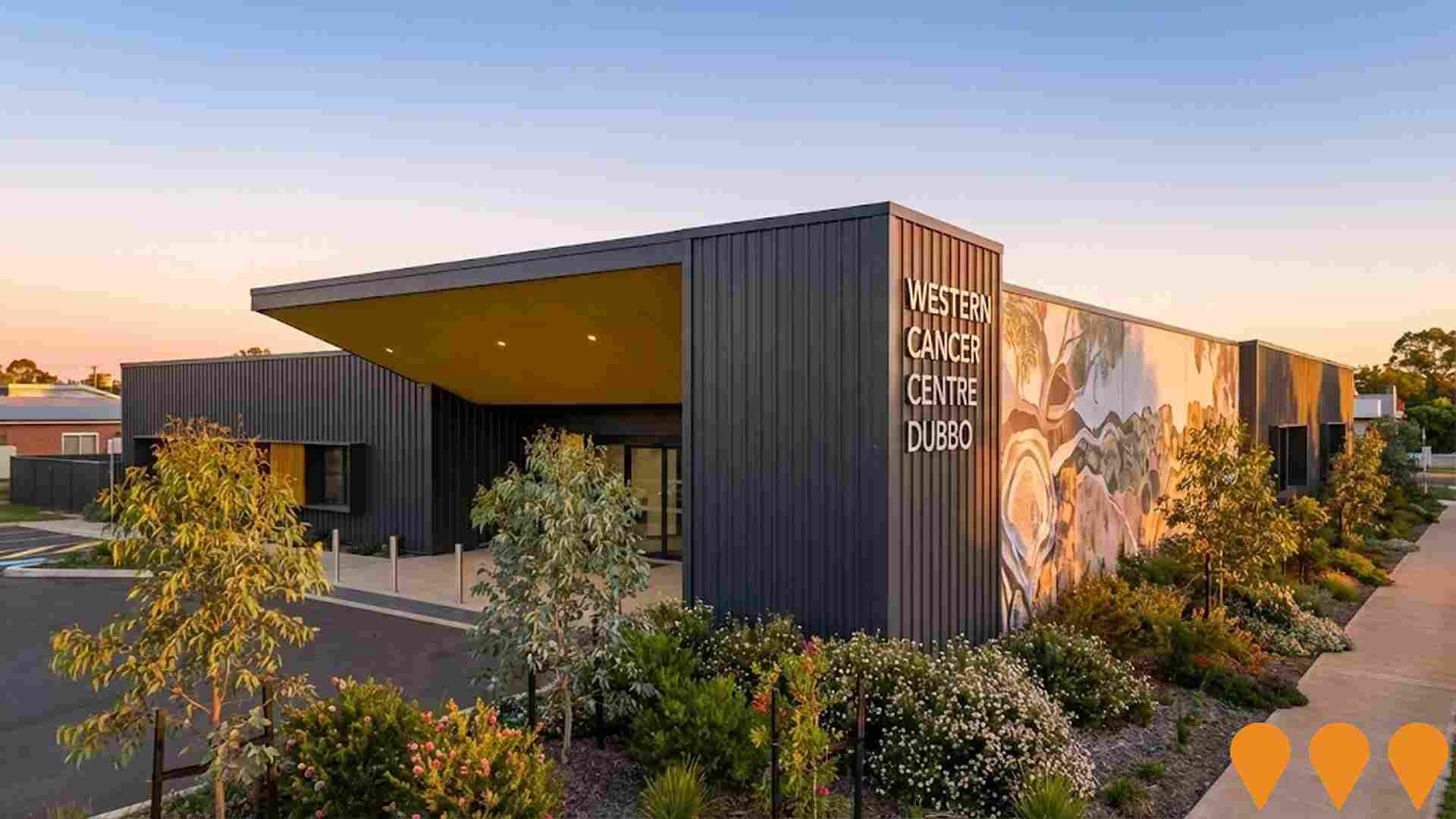
New Dubbo Bridge
Construction of a 660-metre high-level bridge over the Macquarie River including approach roads and intersection upgrades on the Newell Highway. The $263 million project improves flood immunity, reduces congestion in central Dubbo and supports future growth of approximately 5,500 new homes in South and West Dubbo. As of November 2025 all 84 girders are installed, more than 70% of the concrete deck is poured and barrier installation has commenced. The bridge is on track to open to traffic in mid-2026.
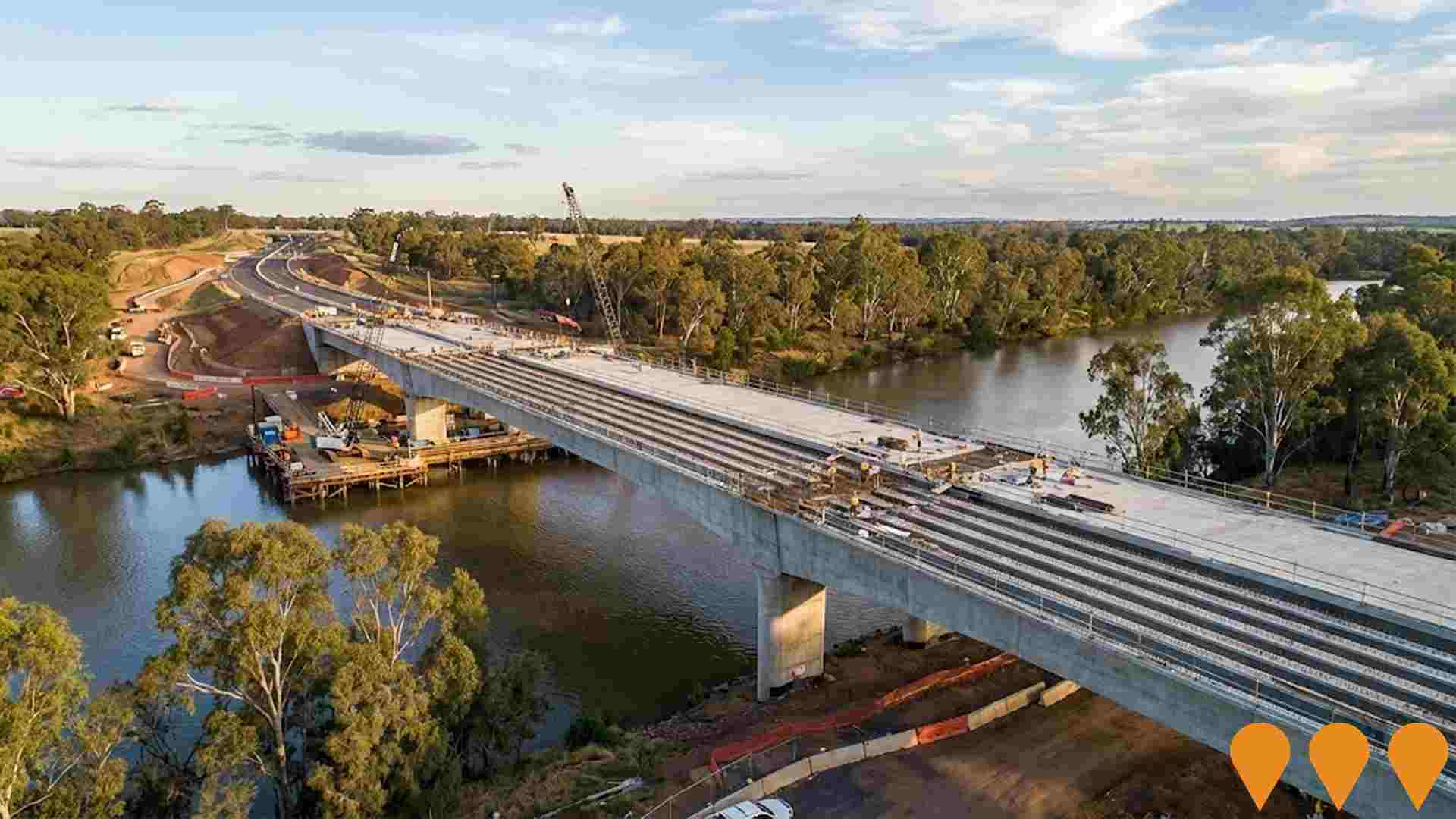
NSW SES Dubbo Unit Headquarters
New purpose-built NSW State Emergency Service (SES) headquarters and warehouse facility in Dubbo's Blueridge Business Park. The $3.1 million facility will serve as the regional base for the NSW SES Central West Region, supporting emergency response across nearly half of NSW from a modern warehouse, office complex, training areas and vehicle storage.

Blueridge Business Park
Blueridge Business Park is a modern business and industrial precinct in South-East Dubbo, providing flexible commercial, industrial, and bulky goods spaces with state-of-the-art facilities including NBN internet, childcare, fitness centers, and cafes. It aims to support business growth, create local employment opportunities, and ensure sustainable development through innovative design and community integration.

The Village Southlakes
A $32 million neighbourhood retail centre featuring a full-line Coles supermarket, Liquorland, medical centre, fitness gym, pharmacy, 16 specialty tenancies, 3 kiosk opportunities, food and beverage outlets, bakery, cafe, restaurant, newsagent, barber, hair salon and other community services. The 7,968 sqm development includes electric vehicle charging bays, bicycle parking, passive irrigation and solar power harvesting. Construction began June 2025 with expected opening July 2026.

Southlakes Estate
Dubbo's largest premium residential estate featuring over 2300 planned dwellings across multiple releases, with diverse land lots from 400m2 to 2000m2. The master-planned community includes gated estates like Delta Shores, eight permanent lakes, waterways, parklands, bike tracks, and luxury facilities. Recent expansions include a new shopping centre with Coles and Liquorland, childcare centres, and additional residential subdivisions with semi-detached dwellings.
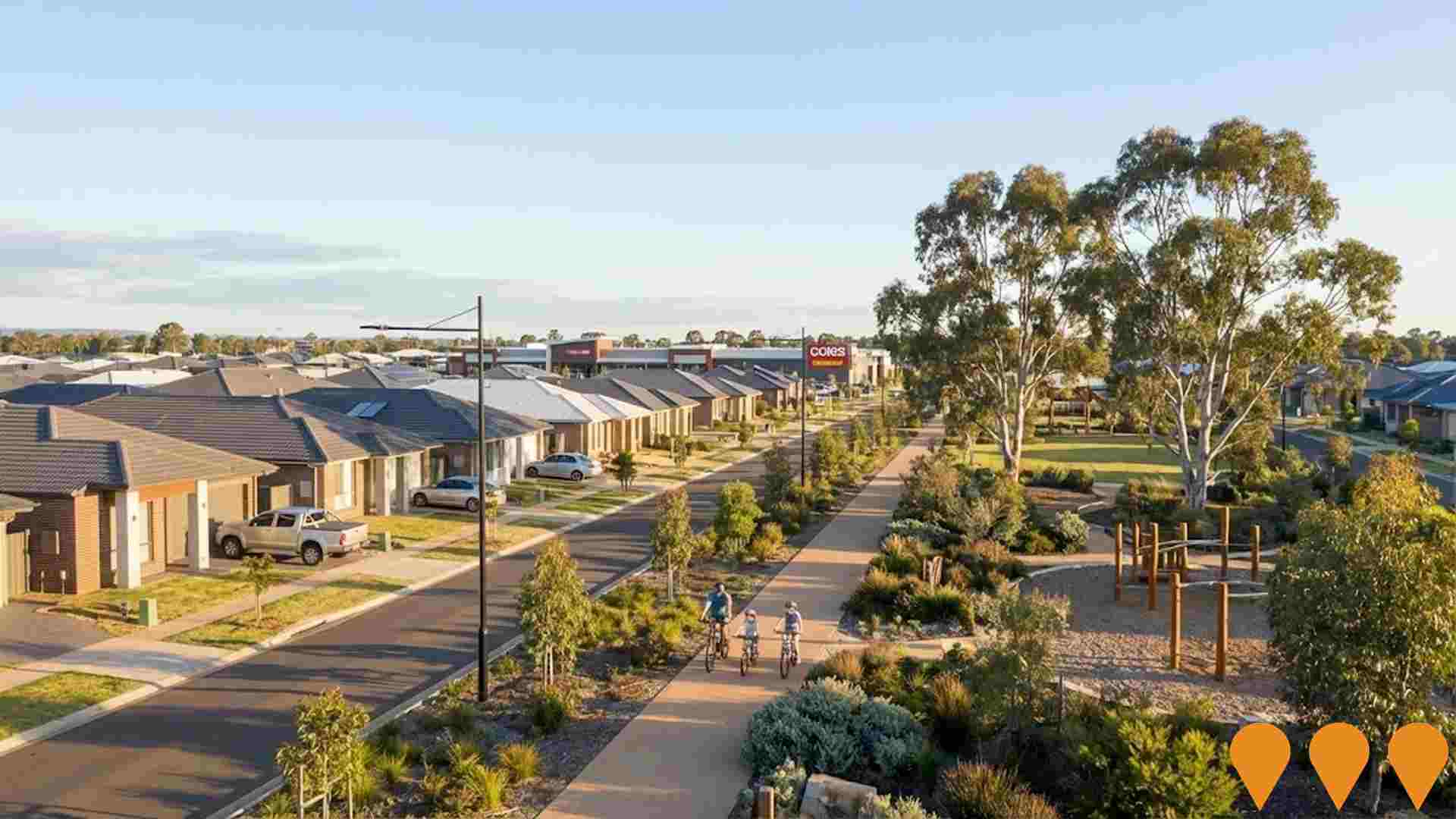
Employment
AreaSearch analysis of employment trends sees Dubbo Surrounds performing better than 90% of local markets assessed across Australia
Dubbo Surrounds has a skilled workforce with diverse sector representation and an unemployment rate of 0.9% as of June 2025. It has 3,253 residents in work, with an unemployment rate that is 2.7% lower than the Rest of NSW's rate of 3.7%.
Workforce participation in Dubbo Surrounds is higher at 65.8%, compared to the Rest of NSW's 56.4%. The leading employment industries among residents are agriculture, forestry & fishing, health care & social assistance, and construction. Dubbo Surrounds has a particular employment specialization in agriculture, forestry & fishing, with an employment share that is 2.8 times the regional level. However, accommodation & food services are under-represented, with only 4.5% of Dubbo Surrounds's workforce compared to 7.8% in Rest of NSW.
The area appears to offer limited local employment opportunities, as indicated by the count of Census working population versus resident population. According to AreaSearch analysis of SALM and ABS data for the year ending June 2025, the labour force decreased by 1.9%, while employment declined by 2.2%, causing unemployment to rise by 0.4 percentage points. In comparison, Rest of NSW recorded an employment decline of 0.1%, labour force growth of 0.3%, with unemployment rising by 0.4 percentage points. Jobs and Skills Australia's national employment forecasts from May 2025 offer further insight into potential future demand within Dubbo Surrounds. These projections, covering five and ten-year periods, suggest national employment growth of 6.6% over five years and 13.7% over ten years. However, applying these industry-specific projections to Dubbo Surrounds's employment mix suggests local growth of approximately 5.8% over five years and 12.5% over ten years.
Frequently Asked Questions - Employment
Income
Income levels align closely with national averages, indicating typical economic conditions for Australian communities according to AreaSearch analysis
AreaSearch's latest postcode level ATO data for financial year ending June 2022 shows that Dubbo Surrounds had a median income of $51,610 and an average income of $60,818. This contrasts with Rest of NSW which had a median income of $49,459 and an average income of $62,998 in the same period. Based on Wage Price Index growth of 12.61% from financial year ending June 2022 to September 2025, current estimates for Dubbo Surrounds would be approximately $58,118 (median) and $68,487 (average). According to the Census conducted in August 2021, household, family and personal incomes in Dubbo Surrounds were at the 62nd percentile nationally. Income distribution data shows that 35.1% of individuals in Dubbo Surrounds earned between $1,500 and $2,999 per week, consistent with broader regional trends where 29.9% fell into this category. After housing costs, residents retained 89.2% of their income, reflecting strong purchasing power. The area's SEIFA income ranking places it in the 6th decile nationally.
Frequently Asked Questions - Income
Housing
Dubbo Surrounds is characterized by a predominantly suburban housing profile, with above-average rates of outright home ownership
The dwelling structure in Dubbo Surrounds, as recorded at the Census conducted on 9 August 2016, consisted of 98.8% houses and 1.3% other dwellings such as semi-detached homes, apartments, and 'other' dwellings. This is compared to Non-Metro NSW's structure of 88.0% houses and 12.1% other dwellings. In terms of home ownership in Dubbo Surrounds, the rate was 43.9%, with mortgaged dwellings at 46.4% and rented dwellings at 9.7%. The median monthly mortgage repayment in the area was $1,733, while the median weekly rent figure was recorded as $265. For Non-Metro NSW, these figures were $1,450 for mortgage repayments and $280 for rents. Nationally, Dubbo Surrounds's mortgage repayments were lower than the Australian average of $1,863, with rents substantially below the national figure of $375.
Frequently Asked Questions - Housing
Household Composition
Dubbo Surrounds features high concentrations of family households, with a higher-than-average median household size
Family households constitute 81.1% of all households, including 38.5% couples with children, 33.7% couples without children, and 8.4% single parent families. Non-family households comprise the remaining 18.9%, with lone person households at 17.1% and group households making up 1.7%. The median household size is 2.8 people, larger than the Rest of NSW average of 2.5.
Frequently Asked Questions - Households
Local Schools & Education
Educational outcomes in Dubbo Surrounds fall within the lower quartile nationally, indicating opportunities for improvement in qualification attainment
The area faces educational challenges, with university qualification rates at 18.2%, significantly lower than the NSW average of 32.2%. This presents both a challenge and an opportunity for targeted educational initiatives. Bachelor degrees are most common at 14.2%, followed by postgraduate qualifications (2.3%) and graduate diplomas (1.7%). Vocational credentials are prominent, with 46.9% of residents aged 15+ holding such qualifications - advanced diplomas at 10.3% and certificates at 36.6%.
Educational participation is high, with 32.6% of residents currently enrolled in formal education. This includes 13.3% in primary education, 10.7% in secondary education, and 2.3% pursuing tertiary education. Dubbo Surrounds has five schools with a combined enrollment of 224 students, comprising three primary and two K-12 schools. Local school capacity is limited at 3.6 places per 100 residents, compared to the regional average of 16.2, leading many families to travel for schooling.
Frequently Asked Questions - Education
Schools Detail
Nearby Services & Amenities
Transport
Transport servicing is low compared to other areas nationally based on assessment of service frequency, route connectivity and accessibility
The analysis of public transport in Dubbo Surrounds indicates there are 318 active transport stops operating. These include a mix of train and bus services. The stops are served by 44 individual routes that collectively provide 374 weekly passenger trips.
Transport accessibility is rated as good, with residents typically located 216 meters from the nearest transport stop. Service frequency averages 53 trips per day across all routes, equating to approximately one weekly trip per individual stop.
Frequently Asked Questions - Transport
Transport Stops Detail
Health
Health performance in Dubbo Surrounds is lower than average with common health conditions somewhat prevalent across both younger and older age cohorts
Dubbo Surrounds faces significant health challenges with common health conditions prevalent across both younger and older age cohorts. The rate of private health cover is relatively low at approximately 50% of the total population (~3141 people), compared to the national average of 55.3%.
The most common medical conditions in the area are arthritis and asthma, impacting 9.1 and 9.0% of residents respectively. Sixty-six point seven percent of residents declared themselves completely clear of medical ailments, compared to 64.1% across the Rest of NSW. Nineteen point six percent of residents are aged 65 and over (1234 people). Health outcomes among seniors in Dubbo Surrounds are above average, performing better than the general population in health metrics.
Frequently Asked Questions - Health
Cultural Diversity
The latest Census data sees Dubbo Surrounds placing among the least culturally diverse areas in the country when compared across a range of language and cultural background related metrics
Dubbo Surrounds, as per the Australian Bureau of Statistics Census 2016 data, had a population with low cultural diversity: 89.6% were Australian citizens, 95.6% were born in Australia, and 99.1% spoke English at home. Christianity was the predominant religion, accounting for 71.8%, compared to 65.6% across Rest of NSW. Ancestry-wise, Australians made up 37.2%, higher than the regional average of 31.8%.
English (30.7%) and Irish (9.2%) were also prominent. Notably, Australian Aboriginal representation was higher at 6.2% compared to the regional average of 11.5%. Maltese and Scottish populations were also relatively higher at 0.4% and 7.6%, respectively.
Frequently Asked Questions - Diversity
Age
Dubbo Surrounds hosts an older demographic, ranking in the top quartile nationwide
At age 42 years, Dubbo Surrounds' median age is similar to Rest of NSW's average of 43 years but considerably older than Australia's median age of 38 years. The age profile shows that the 55-64 year-old group is particularly prominent at 14.7%, while the 25-34 year-old group is comparatively smaller at 9.1% compared to Rest of NSW. Between 2021 and present, the 15-24 age group has grown from 10.1% to 12.7% of the population. Conversely, the 45-54 year-old cohort has declined from 14.1% to 12.2%, and the 5-14 year-old group has dropped from 15.4% to 13.8%. Population forecasts for the year 2041 indicate substantial demographic changes in Dubbo Surrounds. The 25-34 year-old cohort is projected to grow by 29%, adding 168 residents to reach a total of 740. In contrast, population declines are projected for both the 15-24 and 55-64 age groups.
